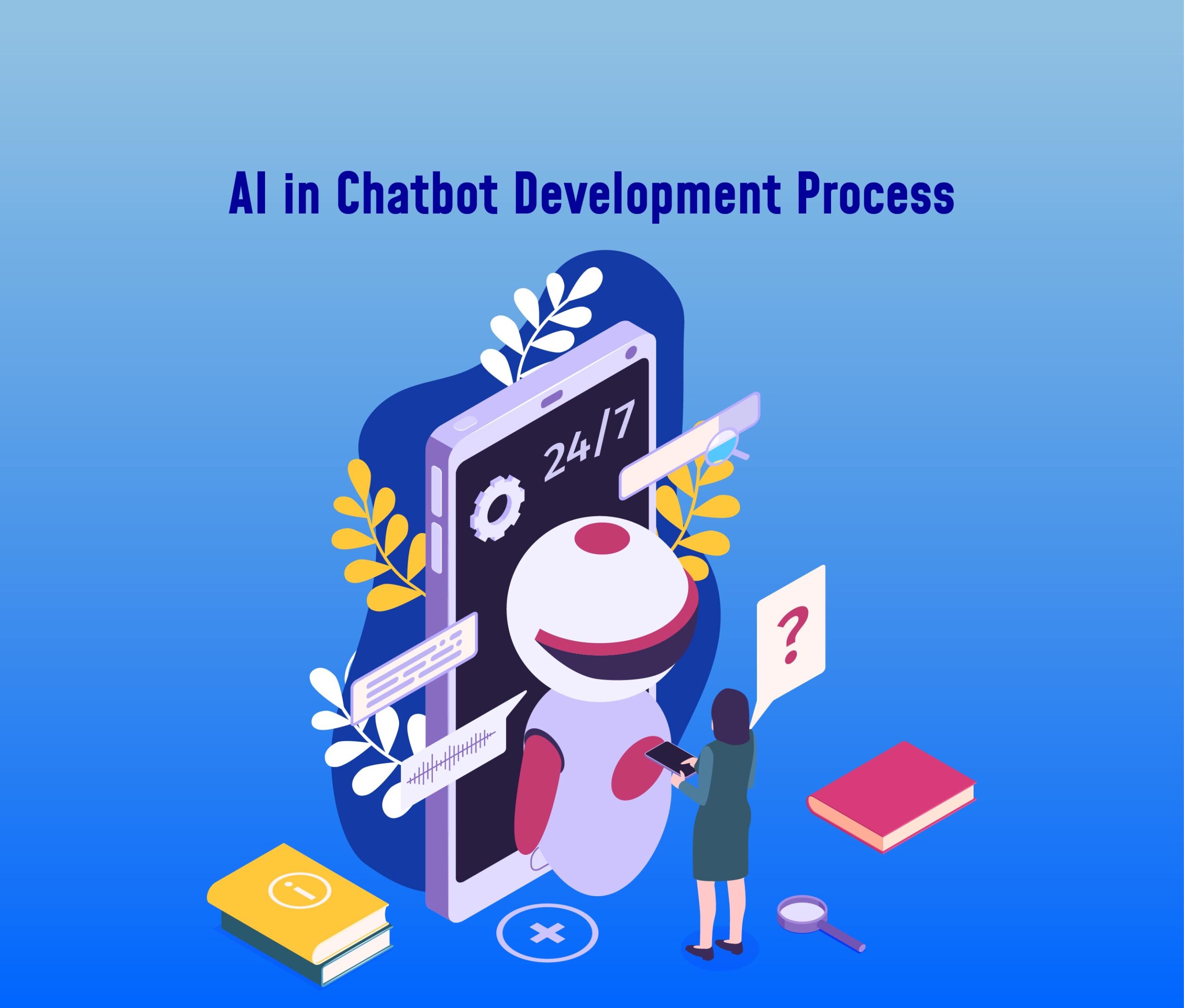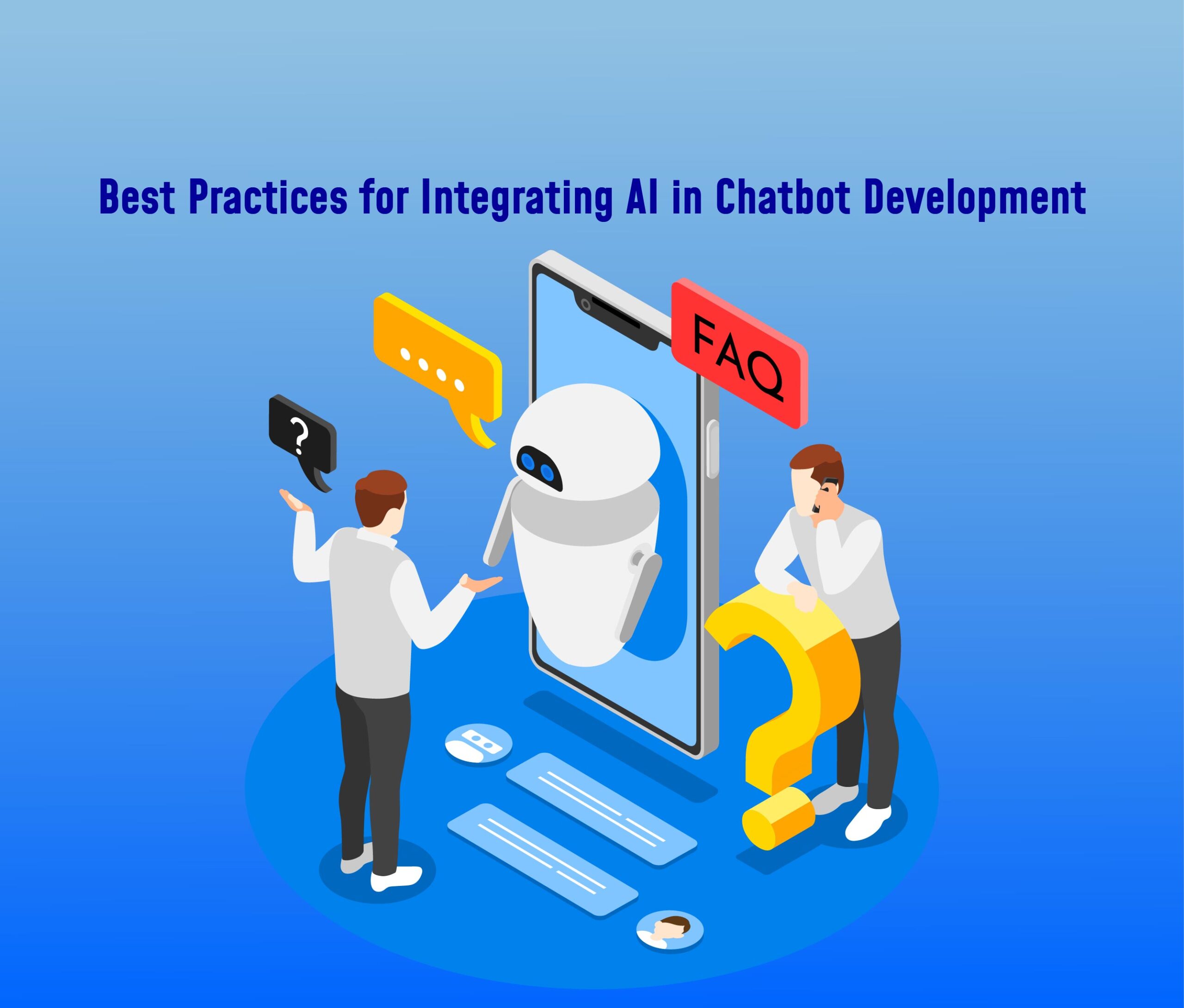In the ever-evolving technology landscape, artificial intelligence (AI) is a transformative force, reshaping the way we interact with and perceive digital experiences. Among the myriad applications of AI, chatbot development emerges as a fascinating frontier, weaving together machine learning, natural language processing, and user engagement strategies. This blog explores the impact of integrating AI in chatbot development, unraveling the intricate threads that make these intelligent conversational agents an integral part of modern digital communication.
Let’s get started!
What is an AI Chatbot?
AI chatbots, short for artificial intelligence chatbots, are software programs that mimic human conversation through text or voice. They go beyond traditional chatbots, incorporating advanced AI features like natural language processing (NLP) and machine learning. This enables them to understand and respond to user input in a more human-like manner. By leveraging NLP, these chatbots interpret human language, operate autonomously, and learn from interactions to adapt their responses over time.
AI in Chatbot Development Process
Here is an explanation of the practical aspects of incorporating AI in chatbot development. Let’s take a look at each step of it:
Step 1: Define Your Objectives
Determine the goal of your chatbot first. Which issues will it resolve? What functions will it carry out? Establishing specific goals is essential because it determines the course of your chatbot development project.
Step 2: Choose a Platform and Define Functionality
Select the chatbot platform based on audience preferences, like a website, messaging app, or dedicated chat application. Define features such as customer support, FAQs, reservations, and recommendations to align with your goals and ensure optimal functionality.
Step 3: Design Conversational Flows and Select a Development Approach
Plan your chatbot’s conversation flows, covering greetings, questions, and responses while considering how it handles different queries and maintains context. Select a development approach based on your project’s complexity: choose rule-based development for predefined responses or explore advanced AI technologies like machine learning and natural language processing (NLP) for a dynamic and adaptive chatbot.
Step 4: Develop the Chatbot and Integrate NLP and Machine Learning
Develop your chatbot’s functions using programming languages like Python, Java, or JavaScript, along with relevant frameworks and libraries. Utilize available chatbot development platforms to streamline the process. For AI-powered chatbots, integrate natural language processing (NLP) and machine learning algorithms to enhance understanding of user intent, context, and language nuances, enabling continuous improvement through user interactions.
Step 5: Test, Debug, and Train Your Robot
Ensure your chatbot’s functionality through comprehensive testing, addressing bugs and usability issues. For optimal performance of AI in chatbot development, prioritize training by providing data and continuous algorithm refinement to enhance its understanding and responsiveness to user queries.
Step 6: Deploy and Monitor
Implement your chatbot on the selected platform(s) and diligently oversee its interactions with users. Gather feedback from users and utilize analytics to evaluate its performance. Consistently enhance and refine your chatbot according to user feedback and evolving user requirements.
Top 3 AI Chatbot Examples
If you’re looking to harness the capabilities of AI in chatbot development, these are a few of the smartest AI chatbots worth exploring.
1. Watson Assistant
Watson Assistant is the most sophisticated AI-powered chatbot available and was created by IBM, one of the pioneers in AI. It can be pre-trained using industry-specific data to comprehend your call logs from the past, chat, ask customers clarifying questions, put them in contact with real representatives, look up answers in your knowledge base, and give you training suggestions to improve your conversational skills.
2. Rulai
Rulai is an AI-powered chatbot for businesses that can multitask and interpret natural language using deep learning. It is capable of anticipating human behavior, assessing the context of the conversation, acting, switching between activities, requesting clarification from users, and comprehending their preferences.
3. LivePerson
Leveraging two decades of messaging transcript data, LivePerson‘s AI Chatbot streamlines messaging across diverse industries. It seamlessly integrates with various messaging channels, including mobile apps, websites, text messaging, Apple Business Chat, Line, WhatsApp, Google, Facebook Messenger, Google AdLingo, and Google Rich Business Messaging.
Best Practices for Integrating AI in Chatbot Development
 The following recommended practices should be taken into account when integrating AI in chatbot development:
The following recommended practices should be taken into account when integrating AI in chatbot development:
- Human-Like Interaction: To put users at ease, aim for a conversational and natural tone while conversing with your chatbot.
- Personalization: Utilize user information to customize interactions and offer personalized advice or solutions.
- Security: A chatbot should adhere to data protection standards and manage user data securely.
- Scalability: As your user base expands, design a chatbot architecture that can keep up.
- Continuous Learning: Provide the chatbot with methods that allow it to learn from user interactions and get better over time.
- Multi-Channel Support: If you want to reach a larger audience, make your chatbot available on several platforms.
Endnote
The use of AI in chatbot development is a rapidly developing and dynamic topic with enormous promise. Chatbots can be effective tools for improving customer service, streamlining processes, offering personalized experiences, or innovating in other areas. You can start your journey toward developing a successful AI-powered chatbot that meets your unique goals and user needs by adhering to the stages listed in this guide and adopting several AI chatbot ideas while developing.
The potential for AI chatbot development is virtually endless as technology develops, making it a stimulating area for growth and innovation. To guarantee that your chatbot stays competitive and keeps adding value for both your company and consumers, keep up with the most recent developments in AI and chatbot development.


